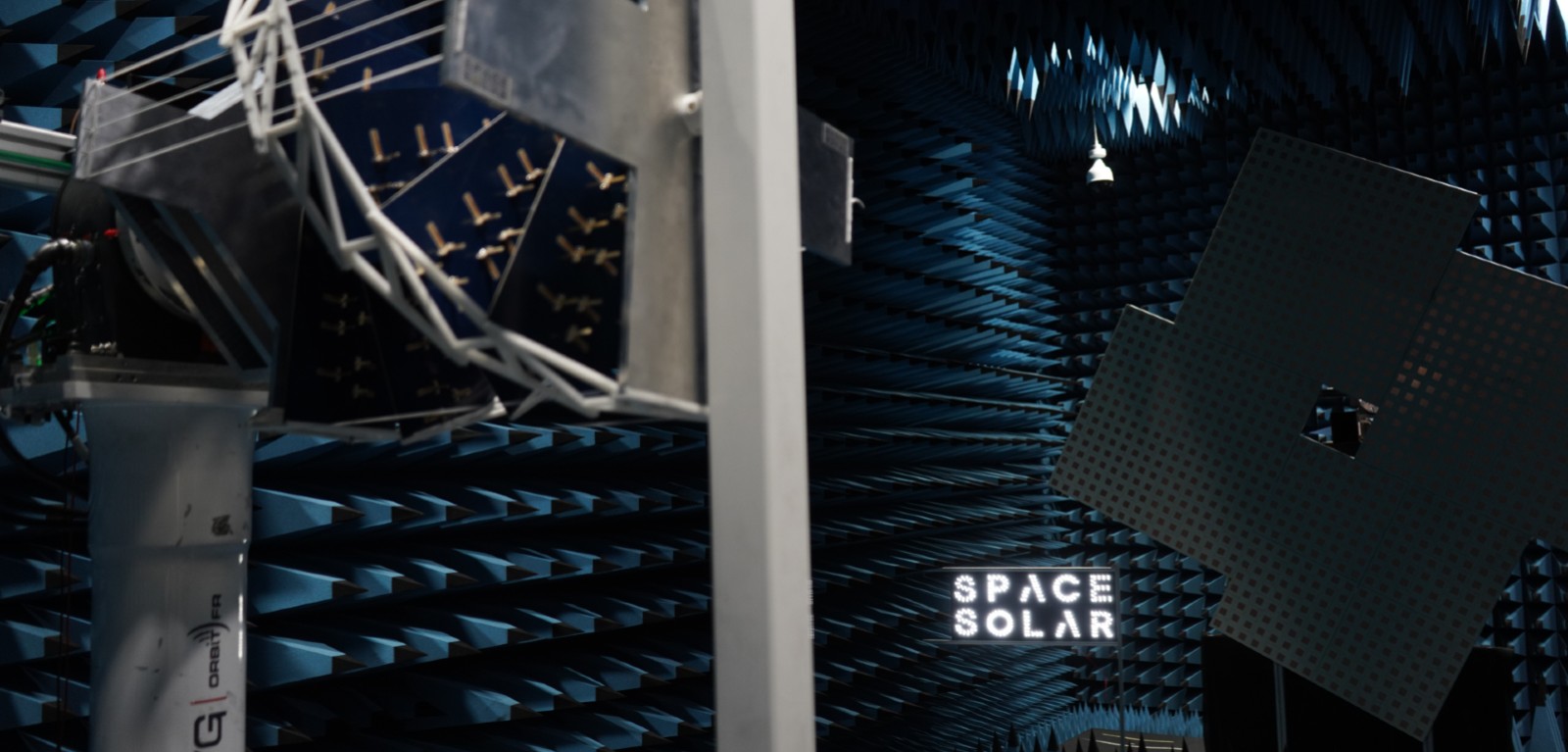Space solar farms could ‘help solve global energy crisis’ with new research from Queen's
Queen's is at the centre of plans to harvest solar power in space to produce a potentially endless supply of net-zero energy and help turn around the world’s climate crisis.

According to new research from the School of Electronics, Electrical Engineering and Computer Science (EEECS), specially constructed satellites could gather energy from the Sun and relay it back to Earth via microwave beams 24 hours a day, seven days a week.
A prototype has been successfully demonstrated in a world-first at the Centre for Wireless Innovation (CWI), which falls under EEECS and ECIT. The prototype was developed by Oxfordshire-based company, Space Solar Ltd, utilising technology developed in partnership with CWI.
24/7 Energy
The benefit of locating a solar farm in space, as opposed to here on Earth, is it could provide continuous 24/7 energy in all weather. The economics work, experts say, because a solar panel in space produces more than a dozen times the amount of renewable energy than the same panel on earth. This is because of the greater light intensity, caused by the absence of clouds, atmosphere and ‘night time’.
Space Solar estimates that each satellite, with an antenna measuring 2km in diameter, could provide approximately two gigawatts of continuous power – enough to power one million homes on planet Earth.
The Vision
Plans are underway for the technology to be scaled up, with a target of trials in space by 2030. The partnership predicts that several hundred satellites could be launched ultimately, providing a substantial proportion of global energy needs, with each requiring over 60 rocket flights and automated installation.
The fundamental research for this aspect of the technology, has been more than ten years in development at CWI at Queen’s. One of the biggest challenges has been inventing a satellite capable of constantly facing the Sun while perpetually orbiting moving objects, yet also able to beam the power back to a fixed point on Earth, probably offshore. Space Solar’s power satellite design, CASSIOPeiA, provides a uniquely capable solution with a solid state power-beaming architecture, with the ability to steer the beam through 360 degrees.
A prototype satellite measuring a half-metre in diameter and containing more than 150 individual antennas has successfully undergone testing within the CWI anechoic chamber, sending highly directional, microwave beams across the lab. An anechoic chamber avoids reflections, giving a controlled test environment and mimicking the conditions 20,000 miles above us. Further simulations will be carried out next year at CWI to finetune the groundbreaking technology and begin scaling it up.
Lead researcher from Queen’s CWI, Dr Neil Buchanan said:
“The technology will undoubtedly require a high, initial investment. Sending rockets into space is obviously pretty expensive although the price has come down significantly in the past decade.
“Once the satellites are up and running, however, they will immediately start to generate substantial amounts of revenue.
“As well as providing a viable business model, this should have a massively beneficial environmental impact, providing a sustainable source of clean, safe energy into the future.”
Martin Soltau, co-CEO of Solar Space Ltd said:
“We value hugely our close partnership with Queen's and together, in just six months, we have delivered this world-first demonstration of 360° power-beam steering, which is a core requirement for the operational power satellite.
“We look forward to building on this successful project as we scale up the technology together. Space-based solar power can help deliver the energy transition with reliable, affordable energy from space, and Space Solar and our partners are leading the way.”
In terms of the science behind the development, breakthroughs include:
-
Solving the problem of how to accurately steer a microwave power beam towards Earth to compensate for movement in the satellite due to the Sun’s and Earth position changing in relation to each other
-
Designing a new type of cross-helical antenna array structure to beam the energy
-
Producing a high-efficiency, microwave-energy transmitter with around 85% transmit efficiency
-
Creating a patented microwave-beam steering circuit to be deployed across the entire satellite
Research funding has been variously provided by the UK’s Engineering and Physical Sciences Research Council; the UK Space Agency; the UK Department for Energy, Security and Net Zero DESNZ; and Space Solar.

Media
Media inquiries to Una Bradley u.bradley@qub.ac.uk